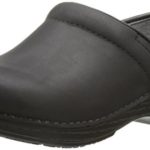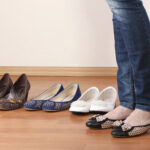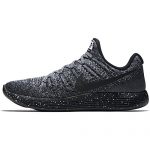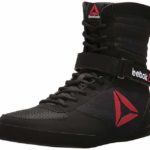Your feet are your foundation but without the proper tools to function in different environments, you run the risk of injury. Whether you work in the food industry, on a construction site, or in a healthcare setting, it is imperative that you have the right footwear for the job. Research indicates that “slips, trips, and falls are common causes of injuries in the workplace,” constituting millions of days of missed work. For those looking to invest in safe shoe options, how do you tell if shoes are non slip?
Three Features To Tell If Shoes Are Non Slip
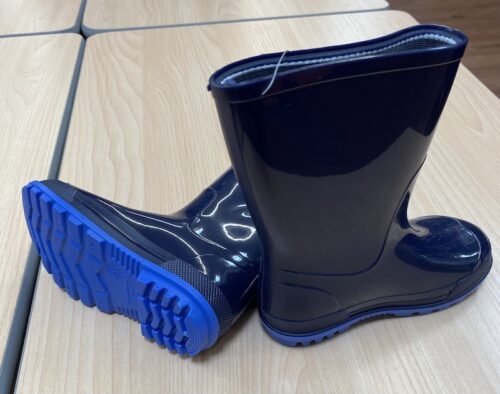
As the name implies, a non slip shoe is an accessory that is designed to handle slick surfaces. By wearing this footwear, the user can maintain their balance in unstable environments and better ensure their safety.
When shopping for this type of shoe, there are three main attributes to look for – a rubber or EVA sole composition, a rounded outsole, and an intricate tread pattern. Why do these features matter? They allow the shoes to effectively grip onto a surface, creating both friction and traction, while simultaneously facilitating the transport of liquids off of the surface. This maintains the wearer’s balance and stability.
Feature 1: Sole Composition
All non slip shoes will feature either a rubber or ethylene vinyl acetate (otherwise known as EVA) base. Why? Both of these materials have a high coefficient of friction. This means that these elements resist motion when in contact with other surfaces. However, there are some key differences.
Rubber Outsole
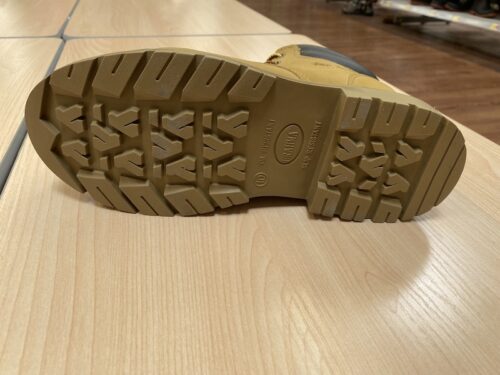
First, rubber is exceptionally heavier and more durable than EVA. This is why most shoes made for construction workers utilize this material. The rubber provides exceptional stability and traction as well as an added layer of protection from sharp objects.
Moreover, rubber is completely and naturally waterproof. It also repels oils. This is why most rain boots feature this thick construction. Additionally, this material absorbs shock, making it an extremely comfortable base for those who are always on their feet. Finally, these shoes have a noteworthy lifespan. Thus, expect this type of shoe to last up to five years!
EVA Outsole
Conversely, EVA is a much lighter and more flexible material. This is an ideal quality for those who are always on the go, like restaurant and hospital workers. Moreover, while this material repels water, it is not 100% waterproof. This means that this material is not ideal in conditions where your feet may become submerged in water.
However, when the base features the right tread design, it can still provide wearer with a sturdy base in an unstable environment. The only caveat is that because EVA is not as dense as rubber, it will likely only last one to two years.
Feature 2: Shoe Shape
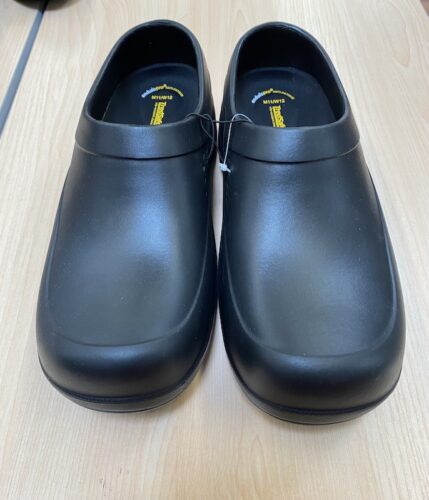
Another key feature that will tell you if shoes are non slip is the appearance of the shoe. The outsole will have a slightly rounded shape instead of being completely flat against the ground. This intentional design allows liquids to drip off of the surface, instead of becoming trapped within the grooves of the tread.
Feature 3: Tread Pattern
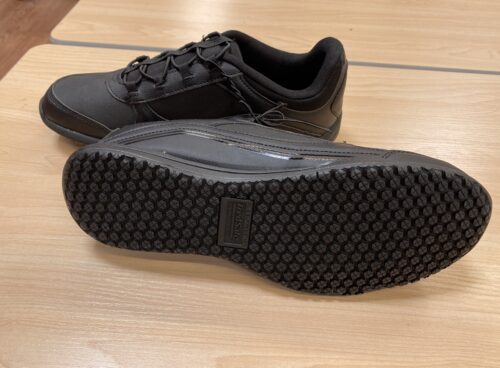
Shoes marketed as “non-slip” will also have a very intricate tread pattern that is stereotypically hexagon shaped. You may also find versions that utilize circles, squiggles, or other figures. This raised pattern is not for show, but rather, another method for channeling unwanted liquids out from under the base of the shoe.
It also further enhances friction against other surfaces and provides solid contact with the ground. Thus, look for outsoles that have small shapes spread across the entirety of the base of the shoe.
Performance Testing
The American Society for Testing and Materials (ASTM) conducts tests “using a portable inclinable articulated strut slip tester (PIAST) for determining the slip resistance of footwear sole, heel, or related materials (test feet) against planar walkway surfaces or walkway surrogates (test surfaces) in either the laboratory or field under dry, wet, or contaminated conditions.”
In laymen’s terms, these evaluations determine if the footwear is effective in these various types of environments. Companies who put their products to the test will advertise that they meet these standards. This will be noted under the code ASTM F1677. If you see this notation, you can rest assured that you have a sturdy and dependable pair of shoes!
That is not to say that shoes that do not have this classification are not non slip. It just eliminates the need to research the product further. However, for those folks who are also required to find products that fall under the PPE compliant protective footwear category, you will need to look for additional codes to guarantee that you find the proper safety gear.
Other Features To Look For In Non-Slip Shoes
Obviously, your main intent is to find a shoe that will not slip on slick surfaces. However, this is not the only important attribute to look for in your footwear. If your work environment requires you to stand on unstable surfaces (such as on a construction site) or to run from place to place (like in a hospital or for a delivery service), you also want to make sure that you have ample support around both sides of your feet and your ankles.
There is a reason why work boots and hiking boots have enhancements in these areas. This added structure reinforces your balance and better ensures a stable footing. Therefore, look for options that are snug around your feet. Shoes with laces can help to facilitate this goal. Additionally, making sure that the shoe actually fits is paramount to your safety as well!
If the size is too large, you will find your feet slipping inside the shoe, even if the outsole is providing traction. This can greatly impact your balance and it can even lead to injury. Thus, measure your shoe size, in both length and width, and then shop for footwear that fits these dimensions.
How To Test Out Non-Slip Shoes
Once you select a pair of nonslip shoes and ensure that they fit properly, it is imperative that you test them out prior to purchase. Obviously, most shoe stores do not feature an intentionally slick section for this purpose, so make a point to look for ceramic or porcelain tile, linoleum, or vinyl flooring or any area that has a sheen to it. Polished and waxed floors are also great options.
IMPORTANT NOTE: The intent is to confirm that the shoes grip the floor. Keep in mind that carpet will provide ample traction to virtually any shoe. Thus, it is not a good place to test the shoes on.
Online Shopping Tips — Finding Non-Slip Shoes Without Trying Them On
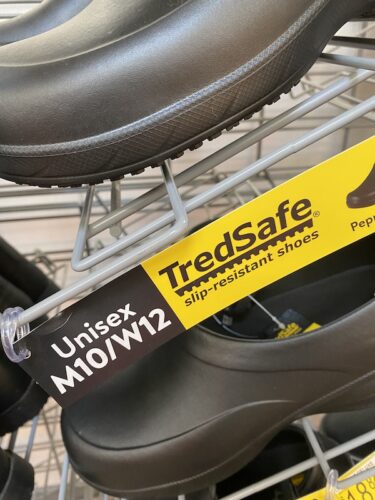
Unfortunately, for those who intend to purchase this accessory online, the phrases “non-slip” and “slip-resistant” will not necessarily be in description of the product. Therefore, the best way to tell if shoes are non-slip is to thoroughly inspect the images that are provided. Look for the top features mentioned above.
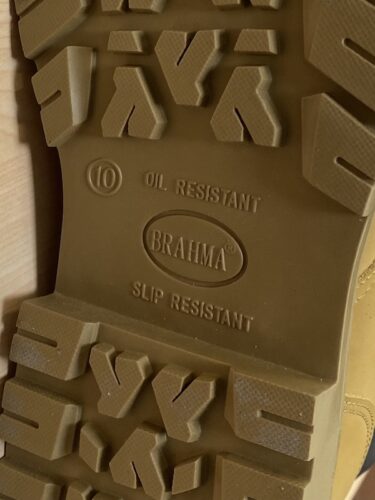
Moreover, a plethora of brands will specifically note the types of materials that the shoes are designed to handle on the product. For example, “Oil Resistant” is many times printed on work boots to let users know that they have been tested in this capacity. This means zooming in on the pictures to get a closer look.
Furthermore, read the customer reviews. These can also provide buyers with insight from the personal experience of others. Additionally, if you are buying your shoes from a department store that sells an array of brands, take the time to research the specific shoe company. Normally, they will do a better job of detailing the different features of their footwear.
If this information is not on the main product page, also check the Frequently Asked Questions section on their site. Lastly, if you still cannot confirm the details, consider calling customer service to speak with a company representative.
Non-Slip Shoe Safety — Replace When Wear Is Apparent
Once you have purchased your non-slip shoes, you will remain safe in slippery environments, as long as the base stays intact. For those folks who are always on their feet as well as the individuals who frequently walk on abrasive surfaces, you will likely wear through your tread quite quickly.
A good practice is to check the soles of your shoes every few months for wear and tear. A visual inspection is always easiest, but for less obvious weathering, you can also place each shoe on a flat surface at eye level. Then, tap the shoe. If there is any wiggle from side to side, it is time to replace them. Remember that the rounded toe will cause movement from front to back, so disregard these motions.
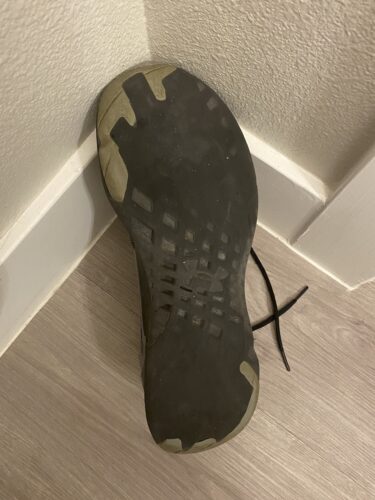
Moreover, another easy way to tell if your non slip shoes need to be replaced is to look for areas where the tread is no longer visible. Again, in order for a shoe to be non-slip, it must have grooves that allow water and other liquids to move through them. If the bottom of the shoe has become flat, it will no longer be effective in this manner.
Finally, for those who choose an EVA sole, look for wrinkling in the material. Due to the fact that this is essentially a soft and flexible plastic, it will compress more rapidly over time. This will lead to your shoes being less effective at gripping onto the ground. Thus, look for wear more often with this outsole type.
How To Make Your Shoe Non-Slip
For those of you who find yourselves in a bind without the time to shop for non-slip shoes, there are some ways to cheat the system and get your footwear into a better spot. While these will not pass OSHA standards, they can tide you over until you have time to get to the store.
Masking Tape Or Grip Tape
Both of these adhesives are known for having a more abrasive texture. In case you didn’t know, masking tape is actually the combination of a type of glue called sizing and crepe paper. This makes for a rough consistency. Since most of us have this product on hand, it is a quick and easy fix.
In comparison, grip tape is the product used on skateboards to give passengers a more secure footing. It is essentially sandpaper that is designed to stick to a surface. This makes it a more durable option and a fantastic remedy in a slippery situation.
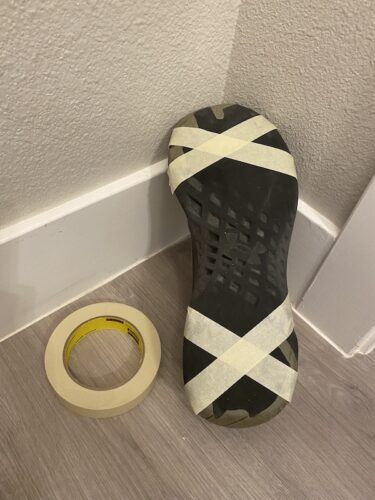
No matter which option you choose, simply apply the tape to the base of the shoe. Additionally, if your shoe comes without a pronounced tread pattern, cover only a portion of the base. This can be done by applying the tape in a striped pattern or in the shape of an X. By doing this, you will create a combination of textures. This can help you regain your balance more easily when you hit a slick spot.
Nail File Or Sandpaper
This method will slightly degrade the integrity, and therefore the lifespan, of your outsole. However, when in a pinch, it is a fantastic way to roughen up your shoes. Simply rub a nail file or sandpaper along the base of the shoe until it no longer feels smooth. An additional step is to sand along the edges to round them out. This can give you two of the three features that non-slip shoes exhibit.
Final Thoughts
Mud, grease, oil, water, and ice are all common culprits for slippery situations. Whether you need this footwear for work or you just want to take added precautions when frequenting certain places, non-slip shoes are a great investment in your safety. Remember that the best way to tell if your shoes are non-slip is by thoroughly inspecting them for key features and by testing them out.
Additionally, if you want to get the most out of your purchase, only wear these accessories in the environments of concern. In other words, if the intent is to wear your non-slip tennis shoes to keep you balanced on the linoleum floors at work, don’t also wear them on your morning jogs through the park. Abrasive surfaces, like pavement, will expedite the degradation of the shoes, and therefore compromise your safety.
Lastly, big name brands that carry an array of non-slip shoes include Skechers and Reebok. These companies will provide you with a reliable product, while not compromising on style. However, if these are not in the budget, stores like Walmart and Target also carry dependable footwear that can give you the same results.
